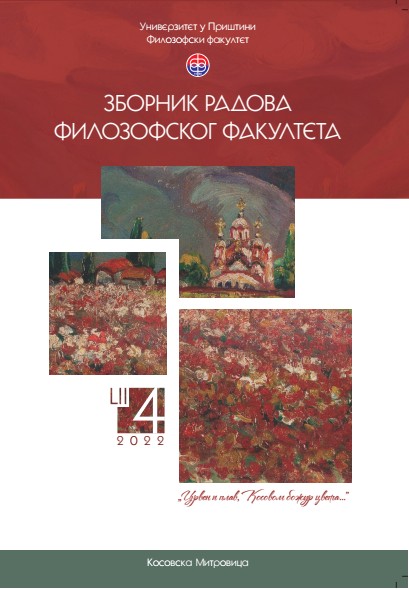Манастир Милешева: анализа и уклапање фрагмената фресака и израда копија спојених уломака
Mileševa Monastery: Analysis, Defragmentation, and Replication of the Frescoes
Author(s): Bojan Popović, Dejan A. Milosavljević, Milica D. Marić StojanovićSubject(s): History of Art
Published by: Филозофски факултет, Универзитет у Приштини
Keywords: Mileševa; fresco fragments; Colossal Christ’s figure; Crucifixion; chemical analysis.
Summary/Abstract: In the course of two successive projects, the first in 2005 and the second in 2020, work on the fragments of frescoes in Mileševa resulted in the integration of five ensembles that could be reconstructed into the basic outline. In addition to this, certain ensembles were integrated that we cannot present in the same way either because we lack the knowledge about the complete appearance or because it is impossible to accurately determine the edge of the scene. As for individual figures, very likely from the first zone, a face from the 13th century was partly integrated and the figure of a monk from the 16th century. Of the inscriptions, two were partly established, the first which probably indicated the name Stefan, from the 16th century, and the other inscription in the circular field beside the Mother of God, containing the phrase ‘of God’ (Serb. Б(о)жиа), from the 16th or the 17th century. A right hand was partly integrated from the ensemble of a colossal figure, belonging to which were two fragments of an eye. We believe that this was a bust of Christ that was at the top of the eastern wall of the narthex. Originating perhaps from the same ensemble is an ensemble of five integrated fragments, as well as two more smaller integrated ensembles, which could represent the lower part of Christ’s body, in the scene of the Crucifixion. The red mineral mercury (cinnabarite) was used in addition to the earth pigments in the artist’s palette, as well as ultramarine, lapis lazuli. The use of 24-karat gold leaf was confirmed on the fragment of a nimbus. Since pure gold was used only on the nimbuses in the narthex, and not gilded silver, clearly, this fragment was from the narthex, as we had assumed.
Journal: Зборник радова Филозофског факултета у Приштини
- Issue Year: 52/2022
- Issue No: 4
- Page Range: 329-351
- Page Count: 23
- Language: Serbian

